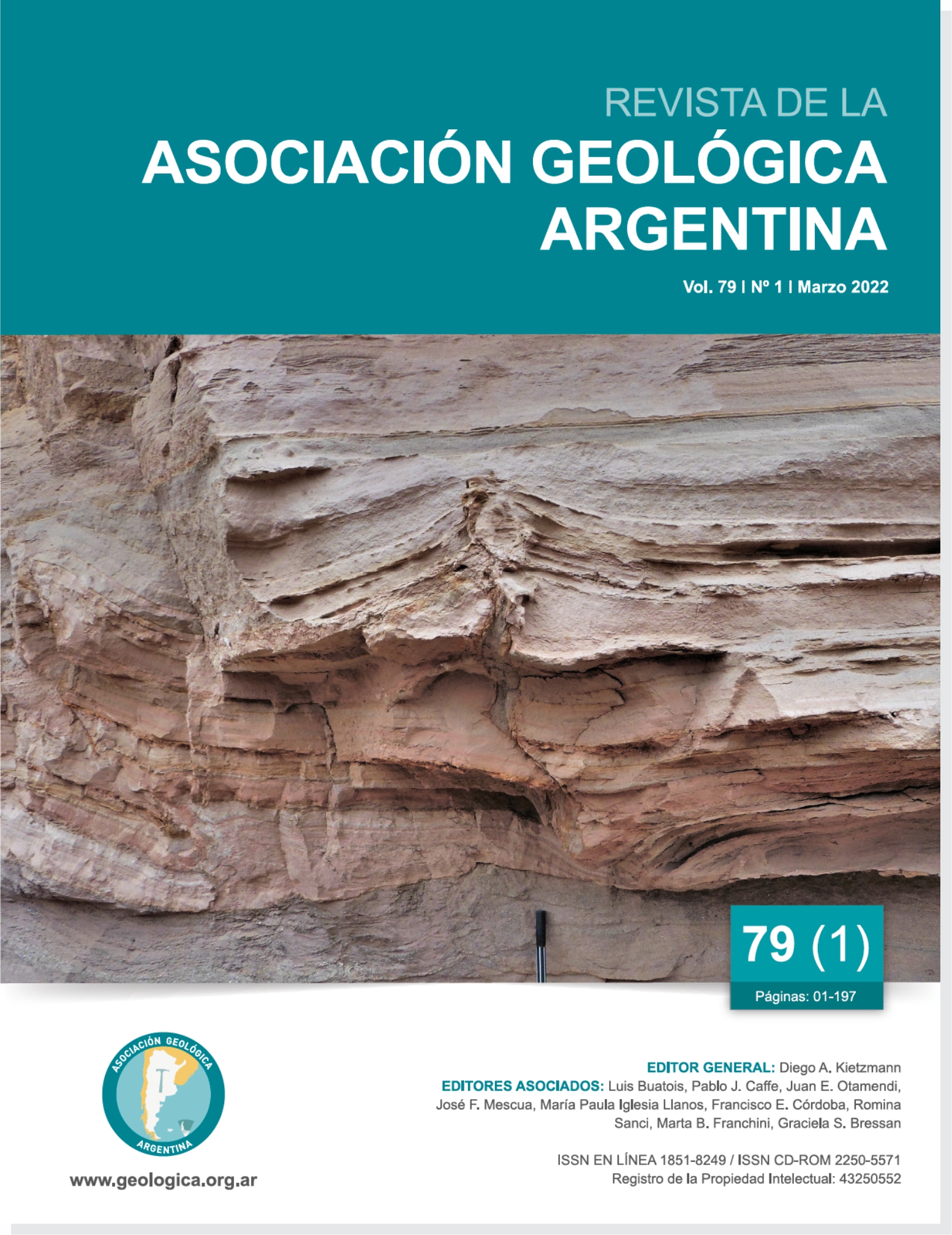Recording of multiple lake-marsh paleoenvironments during the middle Holocene in the Quebrada del Toro, NW Argentina
Main Article Content
Abstract
Quaternary lake systems have developed in many Andean intermontane valleys in northwestern Argentina in association with landslides, rock avalanches, and the development of large alluvial fans, caused either by tectonics, climate change, and/or increased rainfall. At the El Candado location, in the narrow, southern sector of the Quebrada del Toro (Salta Province, Argentina), fine-grained sedimentary deposits are recognized, which, based on their sedimentological and paleontological characteristics, are interpreted as the sedimentary infill of shallow lakes-marshes that were generated by the development of large alluvial fans that dammed the Río Toro. Based on AMS 14C dating of gastropod shells and organic matter (ca. 8-4.8 ka), this region experienced multiple lacustrine-marsh paleoenvironments during the middle Holocene. Pollen analysis and paleobotanical investigations of these deposits suggest that the accumulation of the lake sediments occurred under relatively humid conditions that alternated with semi-arid periods as is typical for the Andean Holocene.
Article Details

This work is licensed under a Creative Commons Attribution-NonCommercial 4.0 International License.
Nota de copyright
Los autores conservan los derechos de autor y garantizan a la revista el derecho de ser la primera publicación del trabajo licenciado según una licencia de atribución Creative Commons que permite a otros compartir el trabajo con el reconocimiento de la autoría y de la publicación en la que se publicó por primera vez.
Declaración de privacidad
Los nombres y direcciones de correo electrónico introducidos en esta revista se usarán exclusivamente para los fines declarados por esta revista y no estarán disponibles para ningún otro propósito u otra persona.

